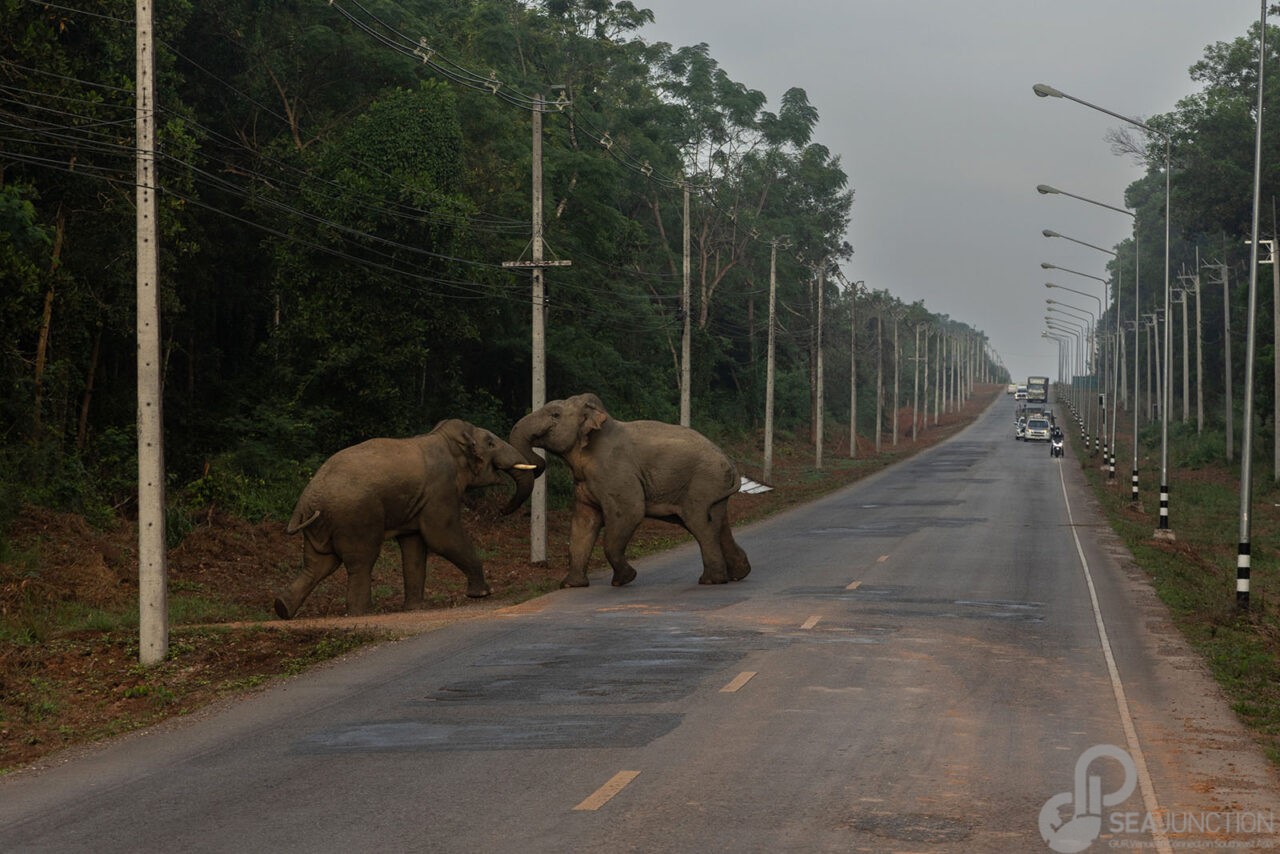
Photo: ©Luke Duggleby
At the beginning of the 20th century, there were more than 100,000 wild elephants living in Thailand. By the early 2000s, fewer than 3,000 remained nationwide as extensive poaching, logging and encroachment into forests severely impacted the population. These actions had put Thailand’s national animal, the elephant, on the endangered species list.
The response was quickly to protect the remaining forests, forming wildlife parks and sanctuaries where the animals could live in safety. But this protection was so effective that the numbers of key species – including the elephant – exploded and certain national parks became unable to sustain this booming population.
As a result, the elephants started to roam, looking for food and new areas outside the forests, leading to Thailand’s most intense and dangerous human-elephant conflict (HEC). Many of the elephants never returned to the original forest and now live almost exclusively amongst the eucalyptus, rubber and palm plantations and occasional community forest within close proximity to villages.
With the highest concentration of wild elephants per square kilometre of natural forest in the country, the four provinces of Rayong, Chonburi, Chachoengsao and Chanthaburi to the east of Bangkok have become an unlikely battleground between farmers trying to protect their livelihoods and wild elephants who need to eat. This area is known as Thailand’s Eastern Economic Corridor (EEC) and is the largest economic zone in the country.
To mitigate the problem, communities formed volunteer groups who are on alert every night and, together with forestry officials, are ready to drive the elephants away from their crops.
But this is dangerous work and would claim many lives on both sides. Between 2012 and 2023, a conservative figure says that 105 people were killed (15 in 2023 alone) by elephants and 133 more injured, while 92 elephants were killed and 46 injured.
At Khao Ang Rue Nai Wildlife Sanctuary, the heart of the Eastern Forest Complex, the population soon exceeded the park’s carrying capacity and around 15 years ago the first elephants began to venture outside. This put them in direct conflict with the communities that live around the peripheries of the park.
Today, experts estimate that approximately 600 wild elephants live in this area with more than half living permanently outside the boundaries of the sanctuary.
Opinions about possible solutions vary and ultimately there is no perfect answer other than trying to manage this fragile coexistence. But with a birth-rate estimated by Thai researchers to be at 8% per annum in this area, one thing many agree on is that the problem is only going to get worse.
Until then, local communities will be on the frontline to protect their livelihoods and the elephants will continue to search for food and shelter.
These photographs will be on display along with several more of such previously unseen shots from the field in a photo exhibition, A Fragile Coexistence – Humans and Elephants in Eastern Thailand, from August 22 to September 3, 2023 at Bangkok Art and Culture Centre (BACC). It’s the work by the British documentary photographer Luke Duggleby with the support of the Pulitzer Center on Crisis Reporting.
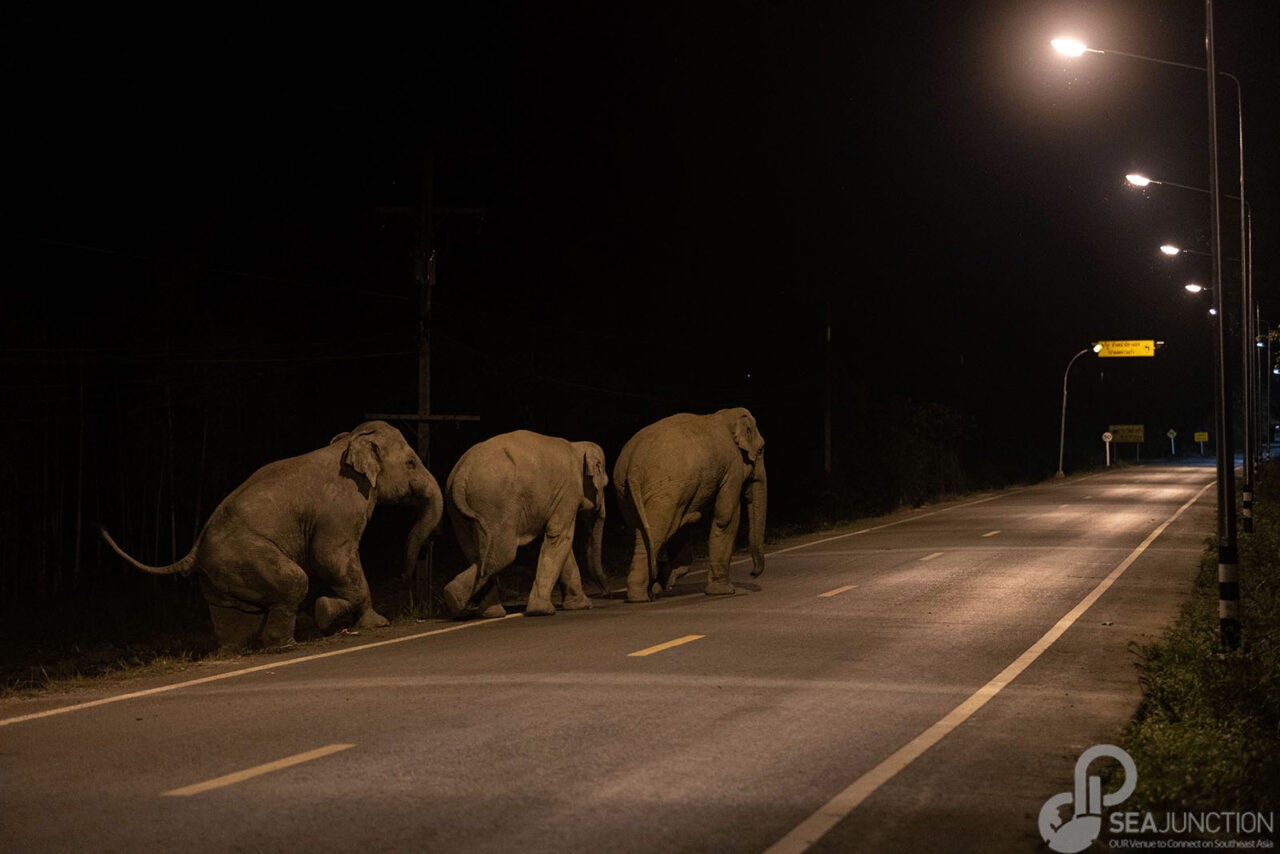
Tha Takiap, Chachoengsao province. A group of young male wild elephant walk across a road in a village at night. According to local experts these 3 elephants have only recently left the Wildlife Sanctuary of Ang Rue Nai and therefore have not yet been identified. With an estimated birthrate of over 8% according to local experts and researchers, the estimated population of over 600 wild elephants in this area could have as many as 40 births per year. Photo: ©Luke Duggleby
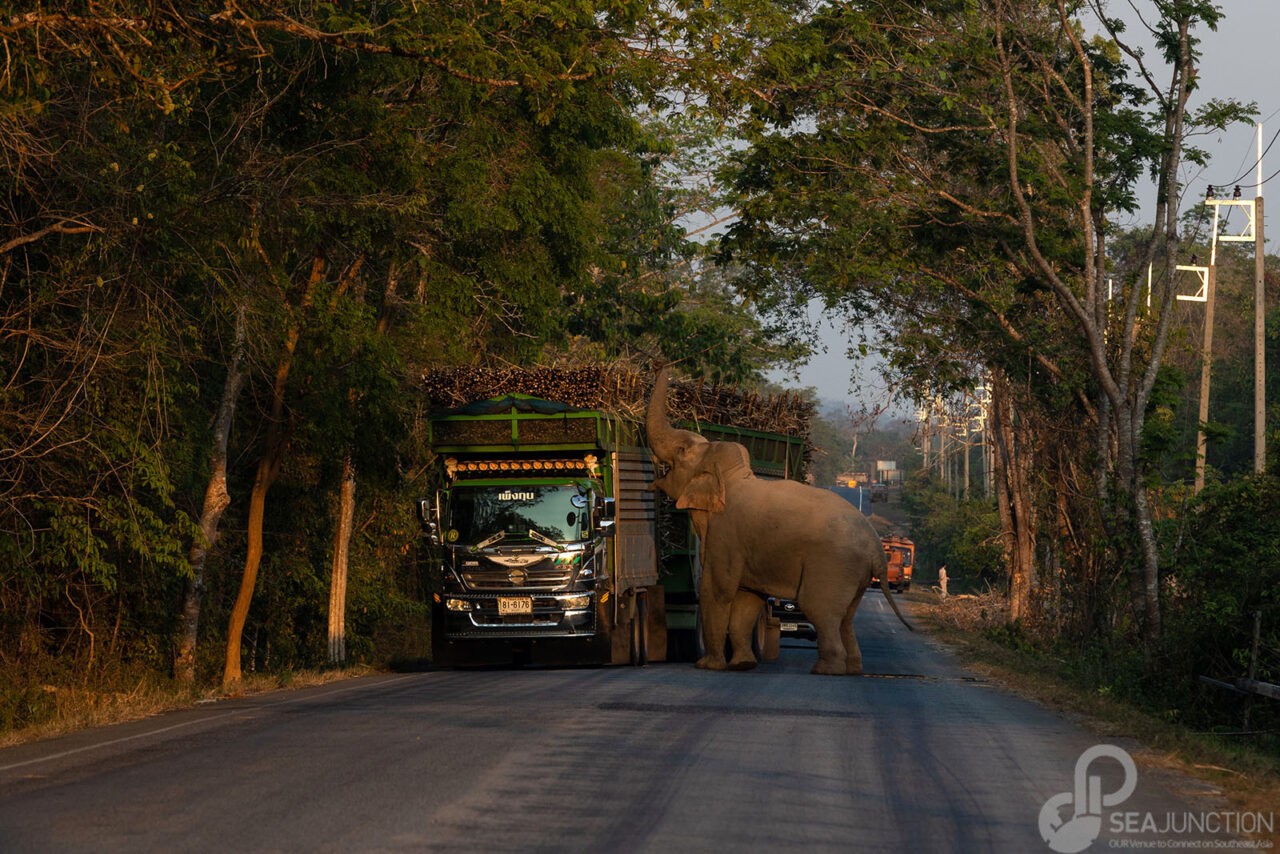
Khao Ang Rue Nai Wildlife Sanctuary, Chachoengsao province. After waiting patiently on a road that cuts through the wildlife sanctuary for a truck loaded with sugarcane, this wild elephant stepped in front of the truck, stopping it, so that it could grab trunkfuls of sugarcane before leaving the vehicle to drive on. In the past the wildlife sanctuary of Khao Ang Rue Nai was able to sustain the wild elephant population which lived inside. But around 15 years ago the population reached a point where the sanctuary alone was unable to provide enough territory and food for the elephants. As a result, the elephants started leaving to find food and increase their territory, causing a dangerous on-going conflict between farmers and villagers who live in the areas surrounding the wildlife sanctuary. Photo: ©Luke Duggleby
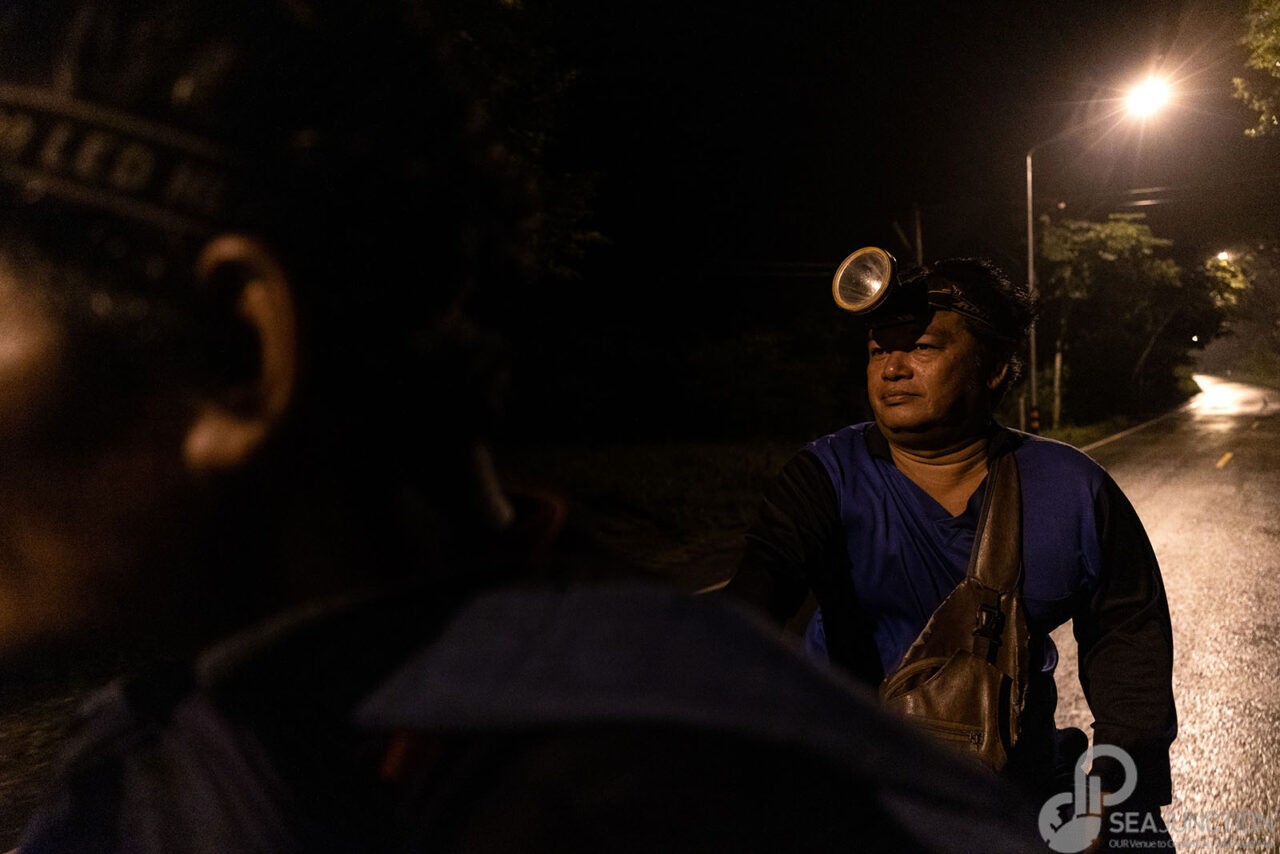
Tha Takiap, Chachoengsao province. Member of a volunteer elephant response group, elephant expert and veteran volunteer Panya travels by pickup truck to push a herd of wild elephants away from villagers farmland. The group made-up of village volunteers and forest rangers, they can spend all night expelling the elephants from the farmlands of the community to make sure that the damage done to the crops is minimised. Photo: ©Luke Duggleby
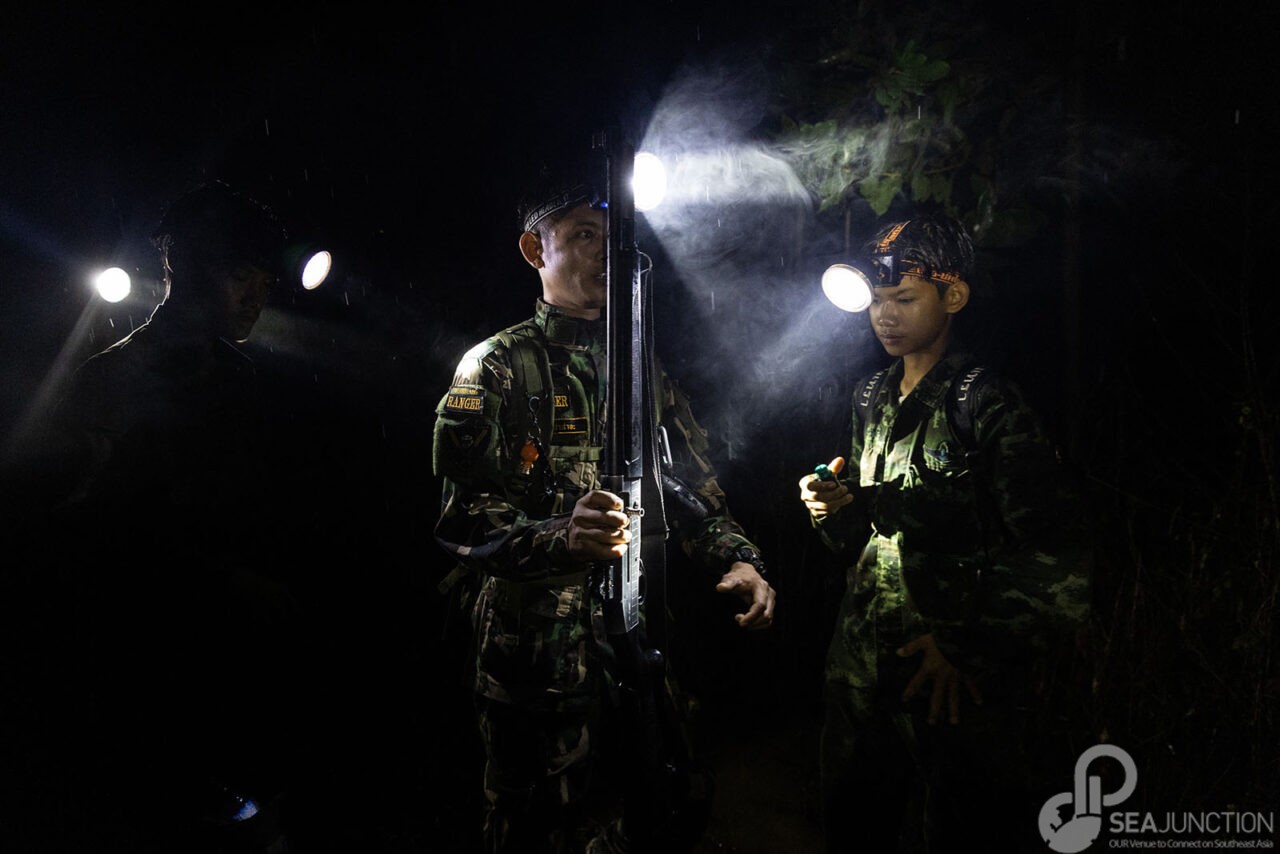
Tha Takiap, Chachoengsao province. Forest rangers and community volunteers patrol a palm plantations on the edge of their village. Using homemade ping-pong bombs, they are fired with slingshots and make loud explosions, like gun fire, which scares the elephants but doesn’t hurt them. They can spend all night expelling the elephants from the community area to make sure that the damage done to the crops is minimised. It is also very dangerous work and over ten people die every year from elephants. Photo: ©Luke Duggleby
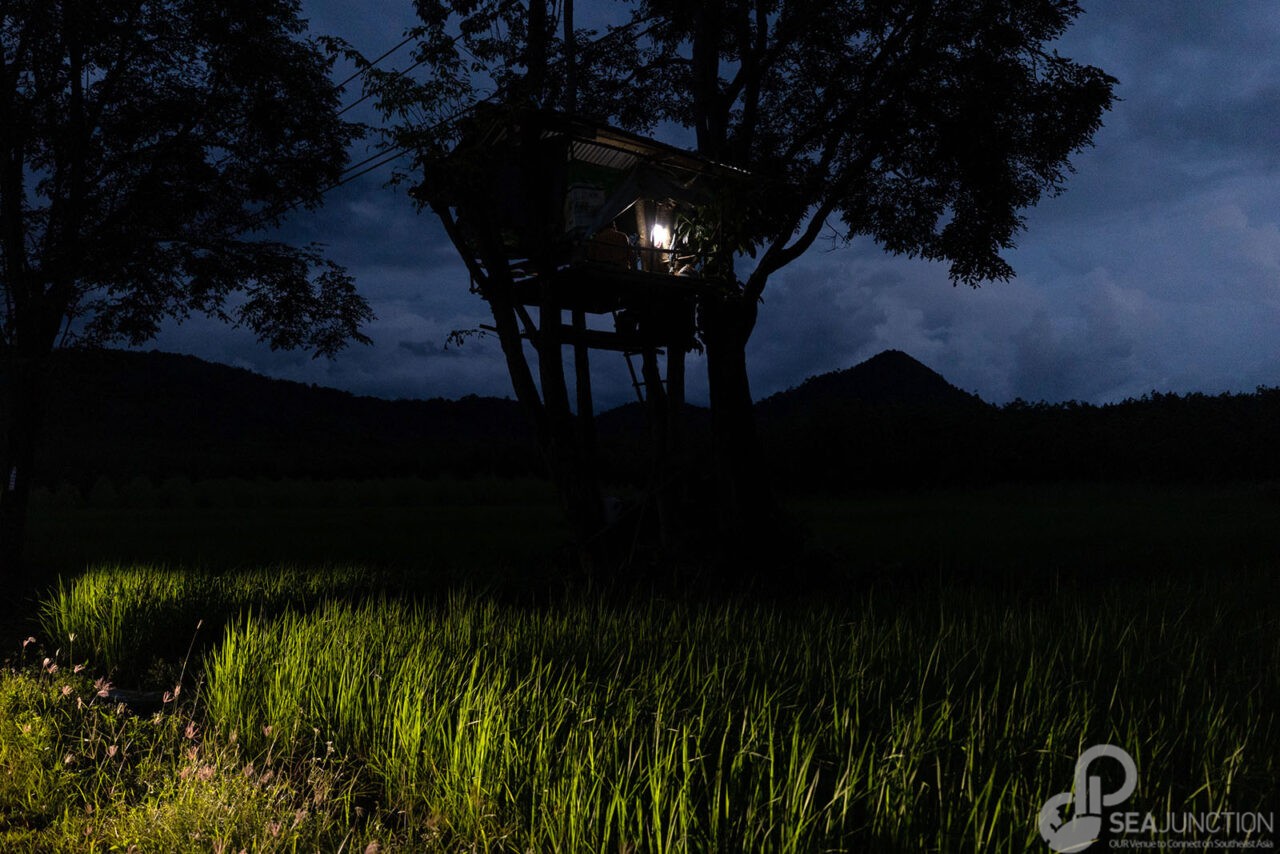
Tha Takiap District, Chachoengsao. Due to the threat of elephants destroying his rice crop a local farmer called Lung Yai built a treehouse that he sleeps in every-night until his crop is harvested. If elephants come in the night he will call for backup and try to repel them. Photo: ©Luke Duggleby
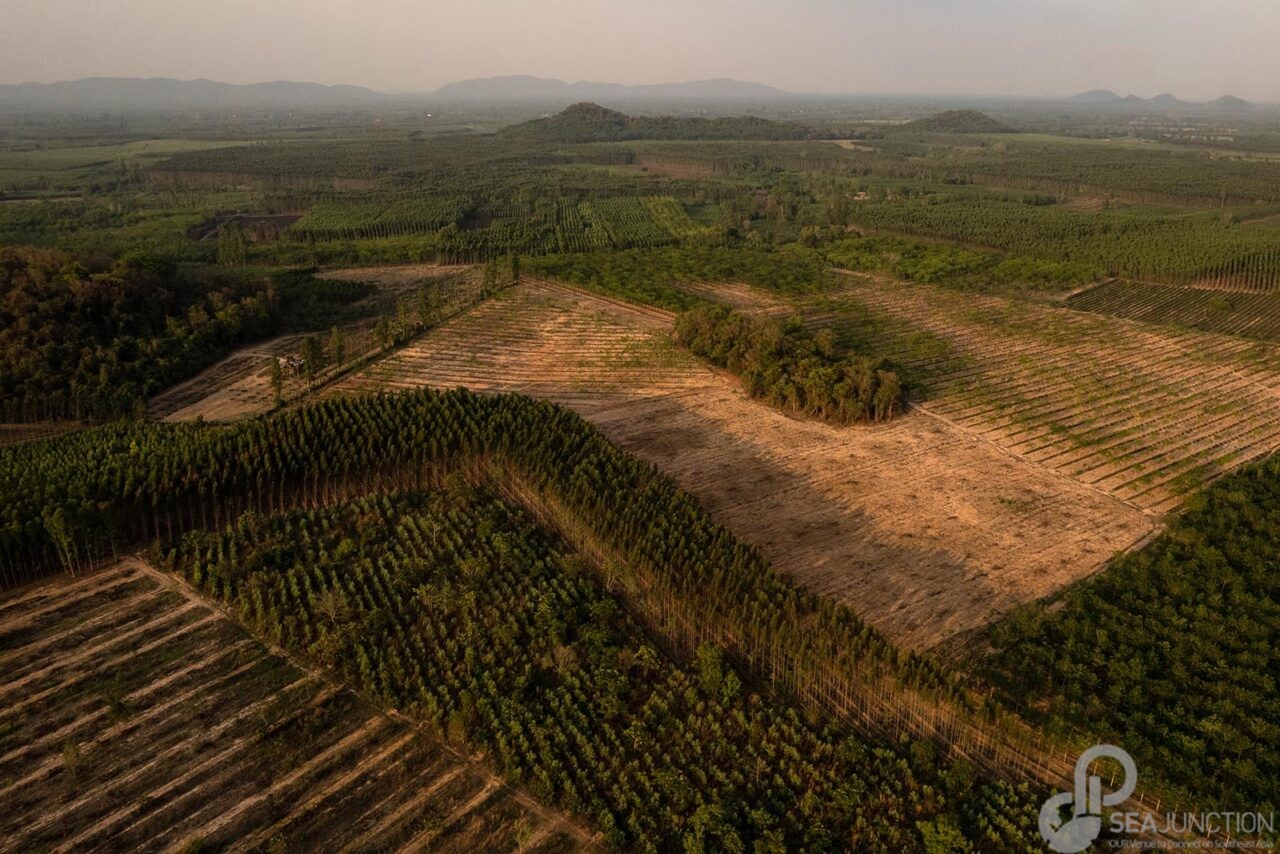
Ta Takiap, Chachoengsao. Large areas of eucalyptus plantations interspersed with small hilly islands of forest. This area has one of the worst elephant problems in the east of Thailand with herds of elephants permanently living and moving through this area. Photo: ©Luke Duggleby
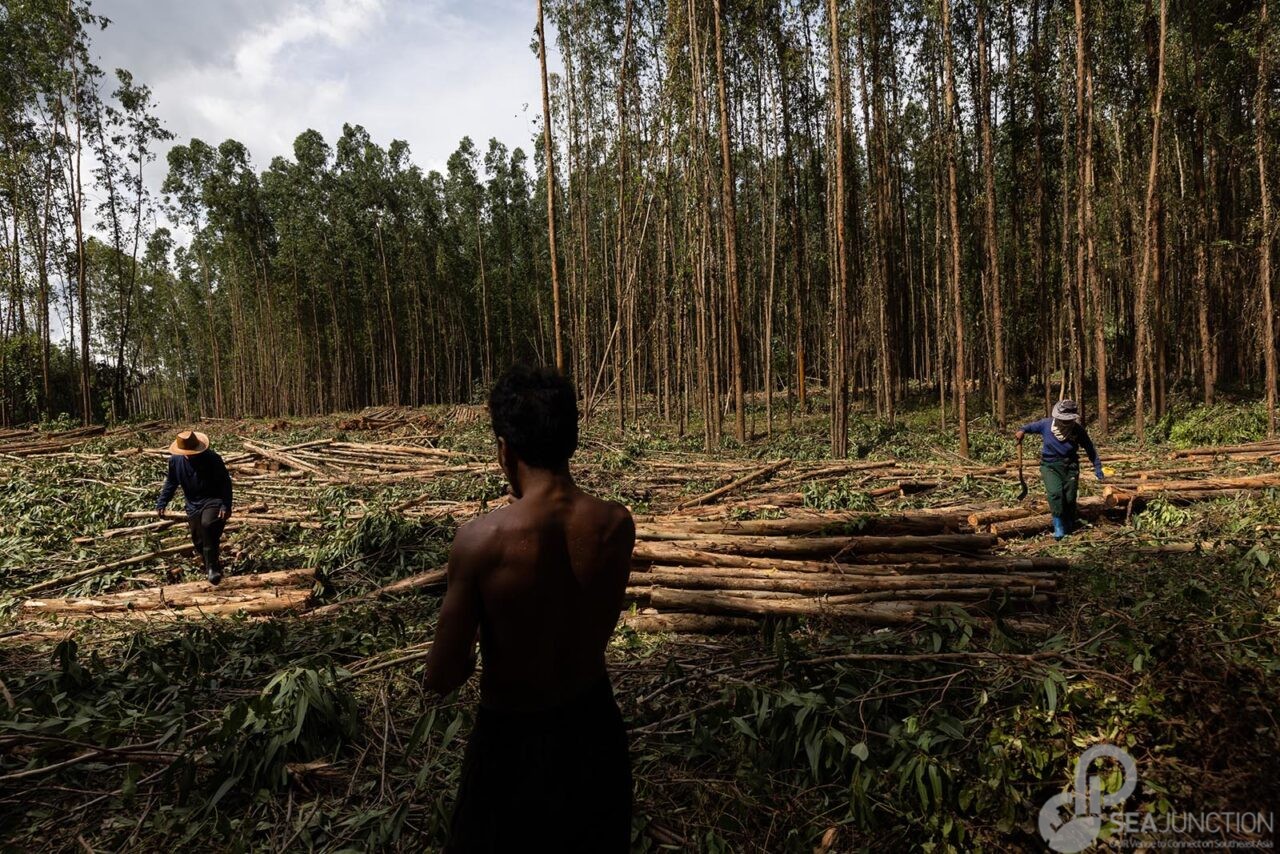
Ko Chan, Chonburi province. Cambodian migrant workers cut down eucalyptus trees which are part of a huge plantation that supplies the paper industry. These vast expanses of eucalyptus trees provide perfect cover for wild elephants and a safe place to sleep during the day. As a result it can make working in such plantations dangerous. Photo: ©Luke Duggleby
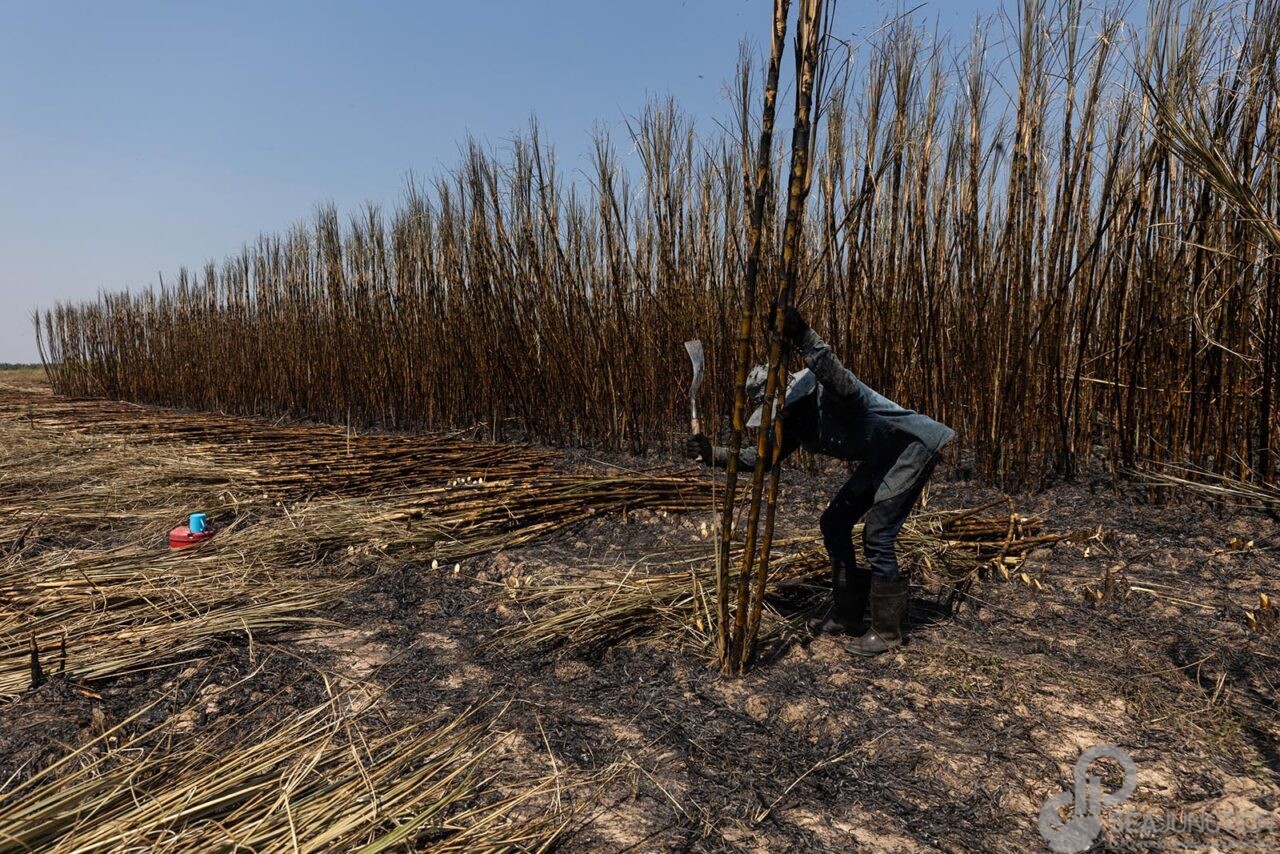
Bo Thong, Chonburi province. Migrant workers from Northeast Thailand harvest a recently burnt sugarcane plantation. It is crops like sugarcane that elephants like to eat and also often rest and sleep in the middle of them, out of sight of people. Photo: ©Luke Duggleby
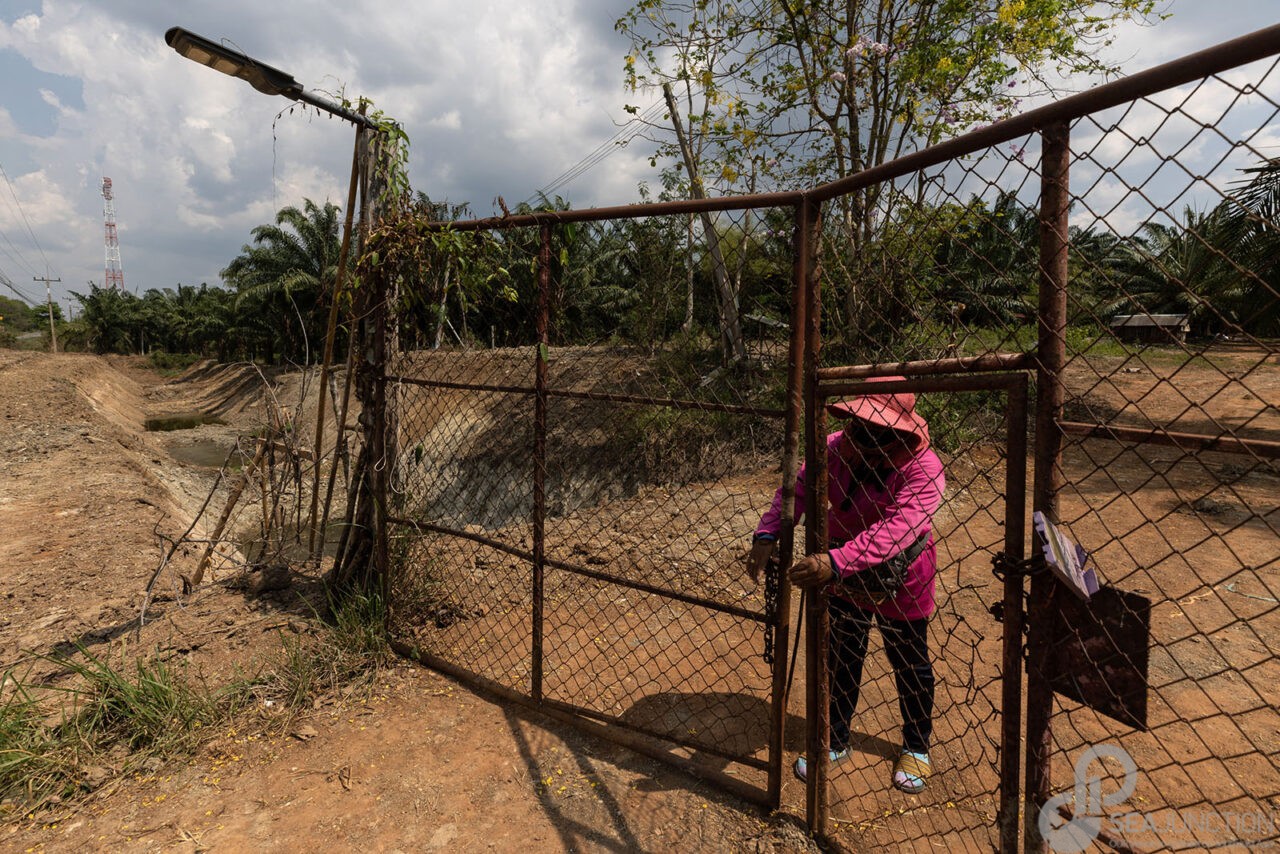
Tha Takiap District, Chachoengsao. To stop elephants entering the land and damaging the crops this landowner has spent thousands of euros digging deep trenches around the property. Photo: ©Luke Duggleby
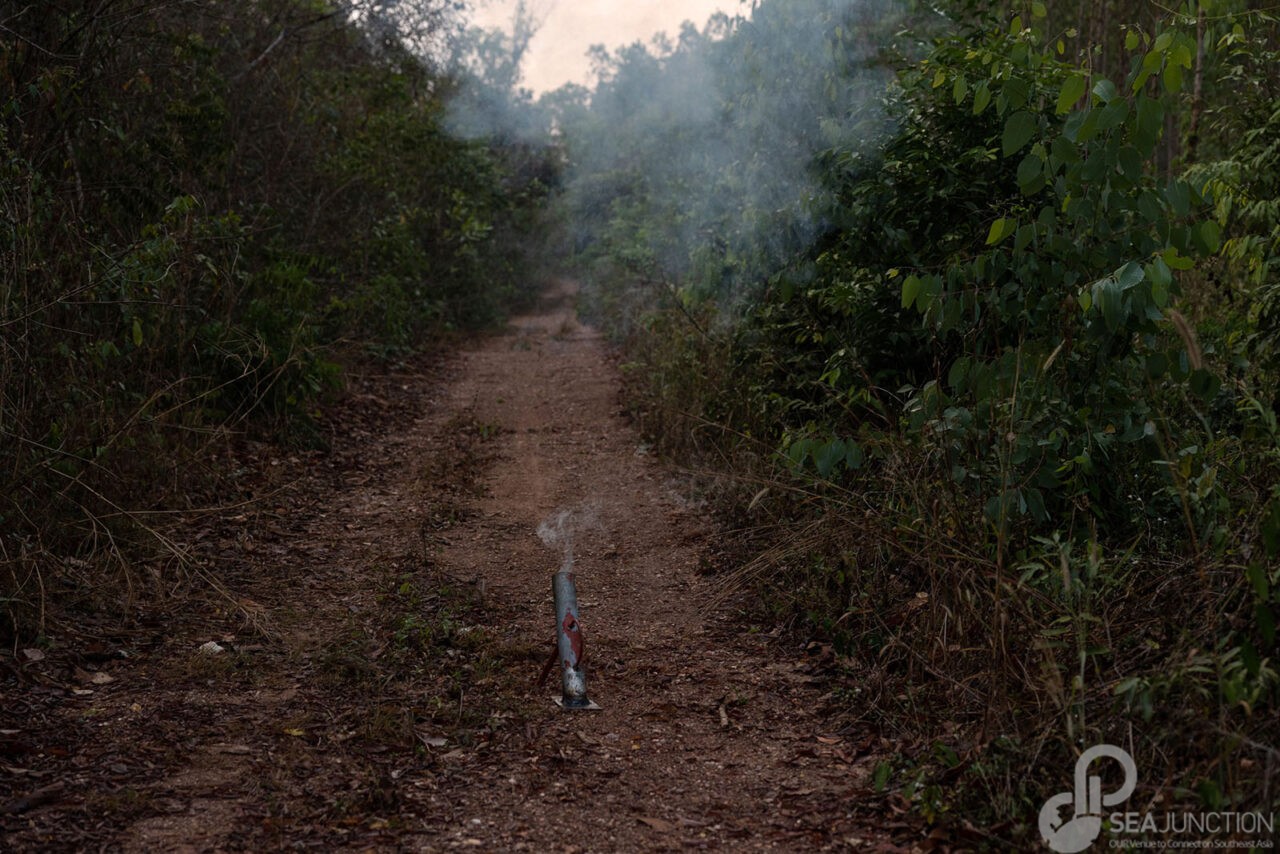
Sanam Chai Khet District, Chachoengsao. A locally made device used to explode ping-pong bombs sends out loud gun shot sounding noises which scare the elephants without hurting them. Photo: ©Luke Duggleby

Tha Takiap, Chachoengsao province. Forest rangers and community volunteers fire ping-pong bombs during a patrol of an area of palm plantations on the edge of their village. The homemade bombs are fired with slingshots and make loud explosions, like gun fire, which scares the elephants but doesn’t hurt them. They can spend all night expelling the elephants from the community area to make sure that the damage done to the crops is minimised. It is also very dangerous work and over ten people die every year from elephants. Photo: ©Luke Duggleby
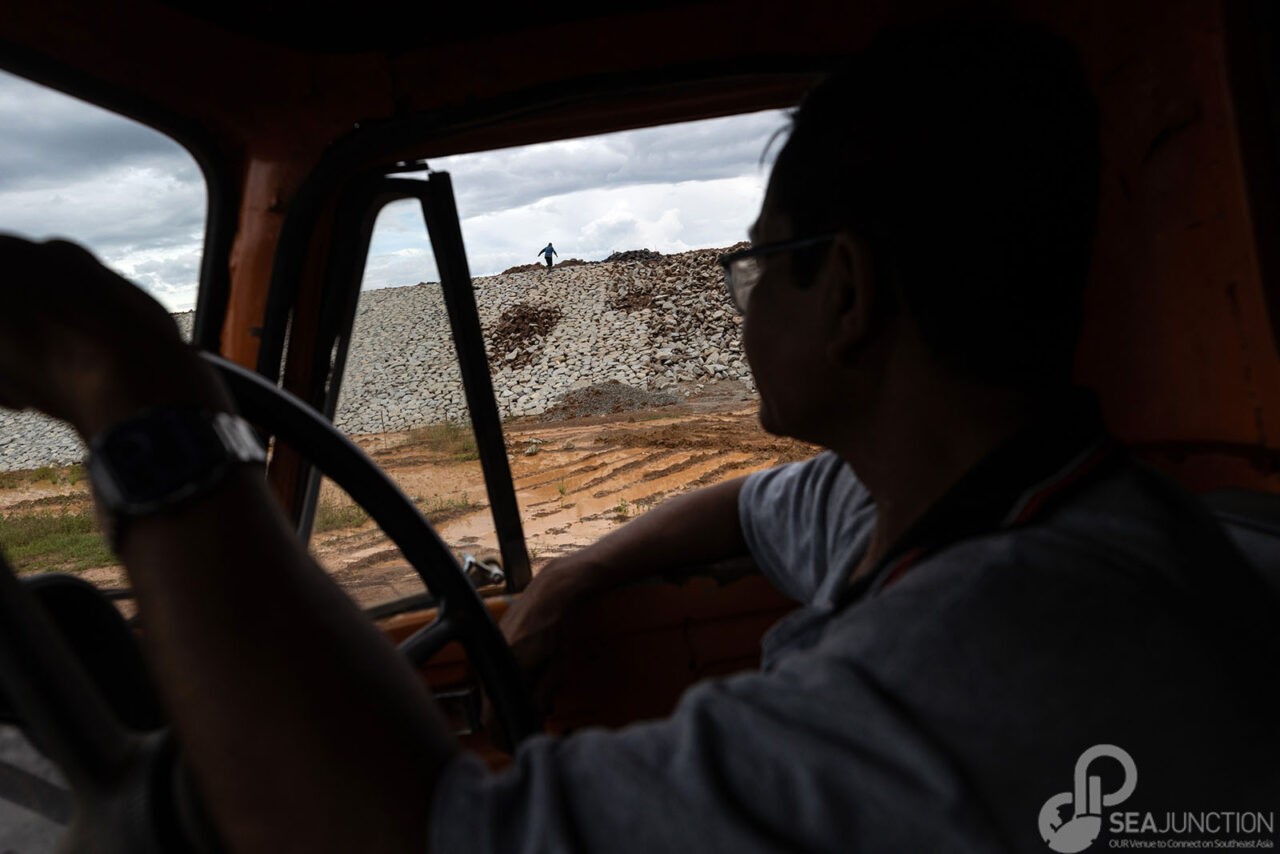
Tha Takiap, Chachoengsao province. Somnuck Boonprakon, 60, drives past a dam construction site on his way to work. He works as a nighttime security guard, sleeping on the construction site to protect from thieves but also against elephants. The dam site and in fact Somnuck’s own house are visited regularly by wild elephants as they pass through roaming for food at night. Once the dam is completed it will flood a large area causing the elephants to move into new areas. Photo: ©Luke Duggleby
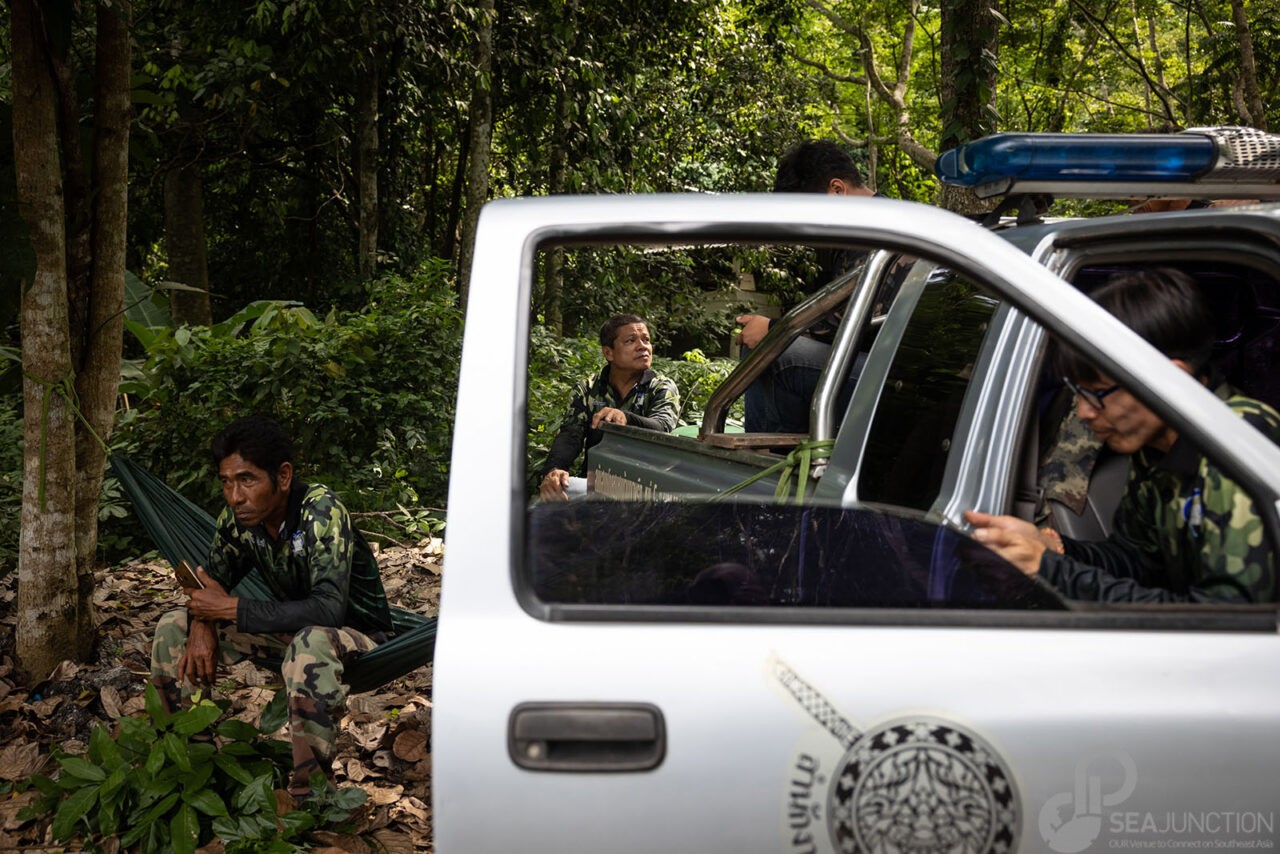
Nong Yai, Chonburi. Over 40 village volunteers and forestry officials gathered to move a herd of over 50 elephants towards a forested area, away from farmland. The process took from morning until night-time with the elephants refusing to move until after dark. The herd returned the next day. Photo: ©Luke Duggleby
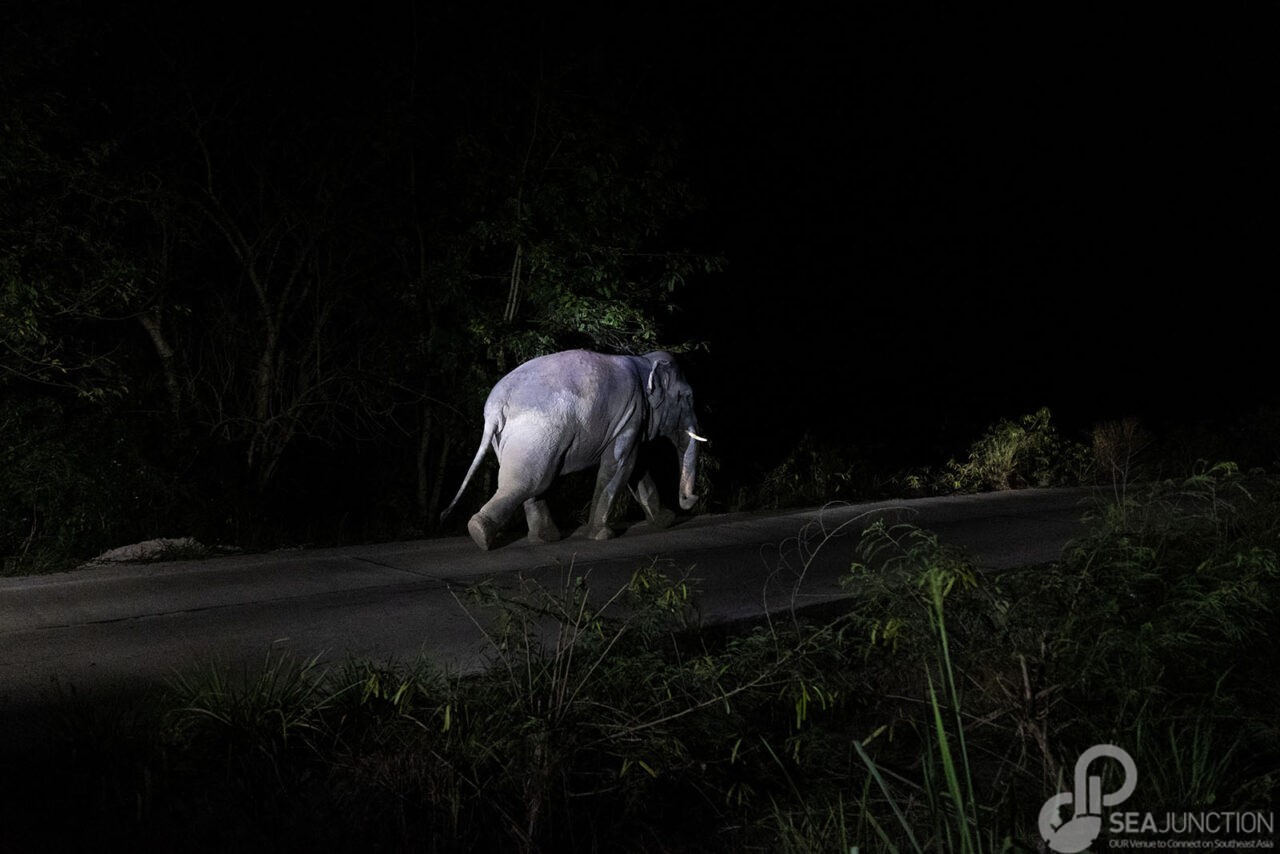
Wang Chan, Rayong Province. A wild elephant is tracked through villages and rubber plantations by a group of community volunteers and forestry officials who’s aim is to push the animal to return to the forest. They were finally successful by around 3am. Photo: ©Luke Duggleby

Praket Reservoir, Chanthaburi. A herd of wild elephants roam around the grassy hills of Praket reservoir. This area was where the first wild elephants started leaving the wildlife sanctuary of Ang Rue Nai over 15 years ago. Photo: ©Luke Duggleby
Source : https://bkktribune.com/a-fragile-coexistence-humans-and-elephants-in-eastern-thailand/


